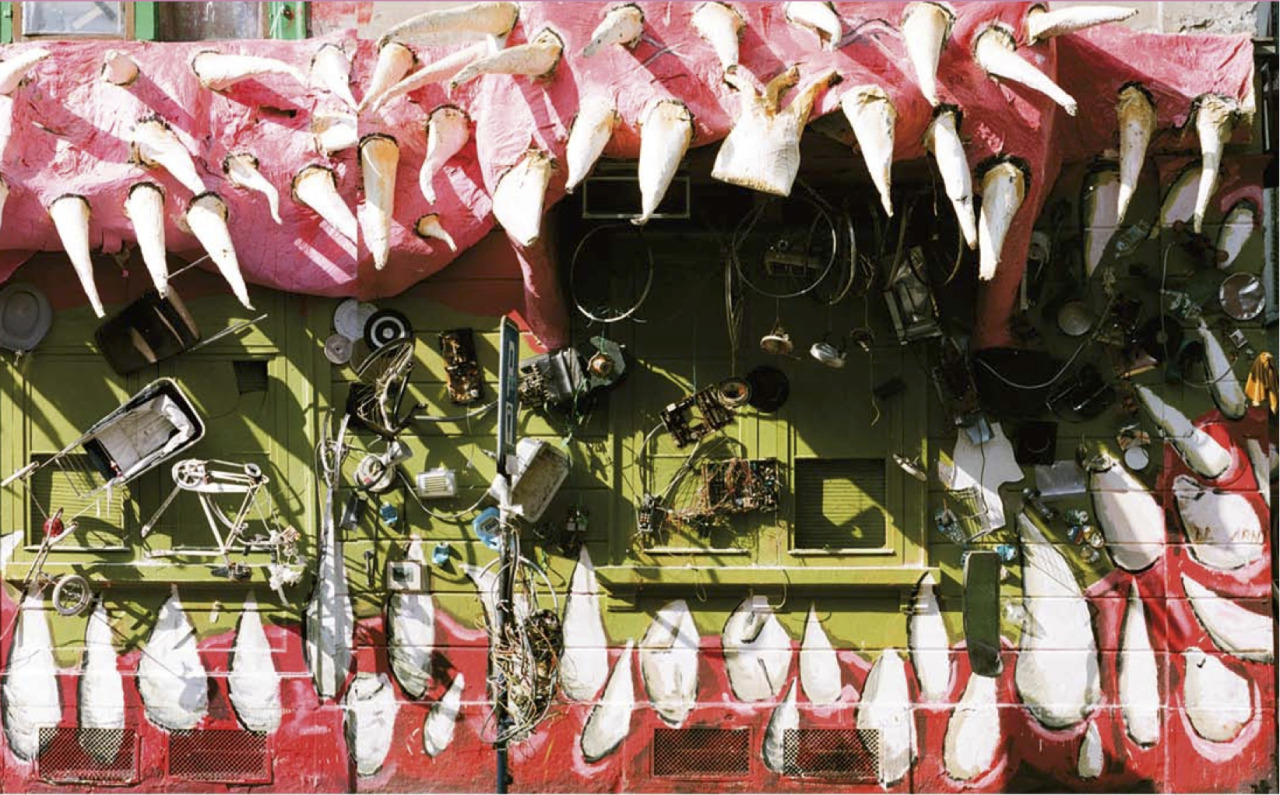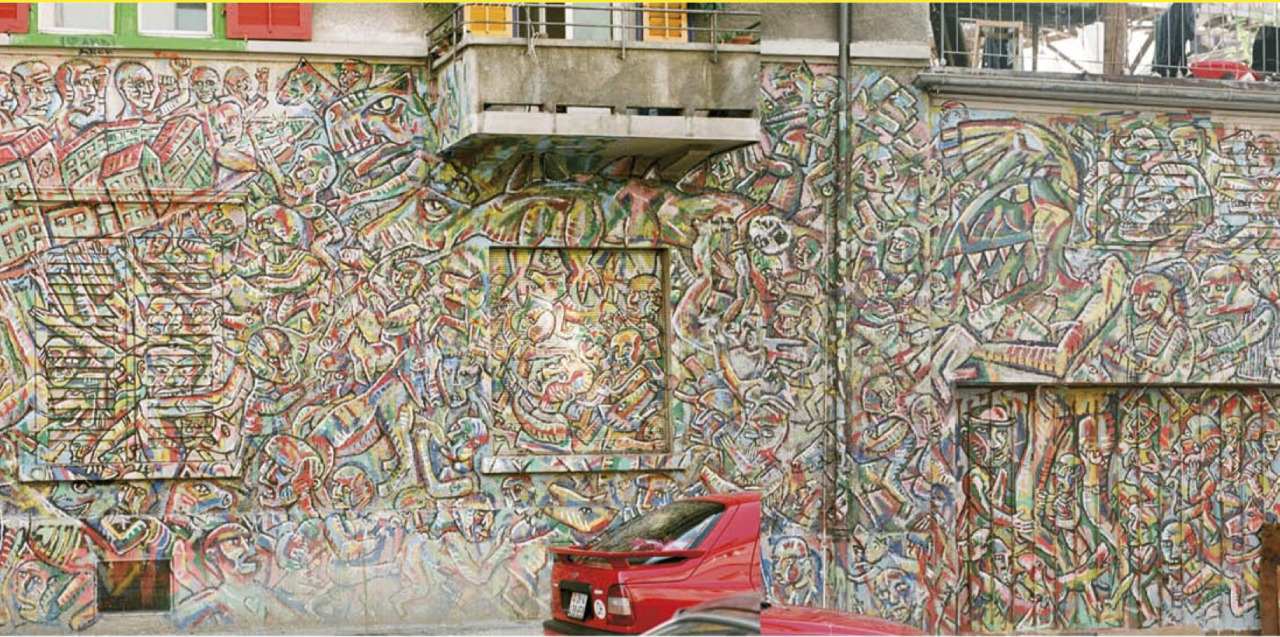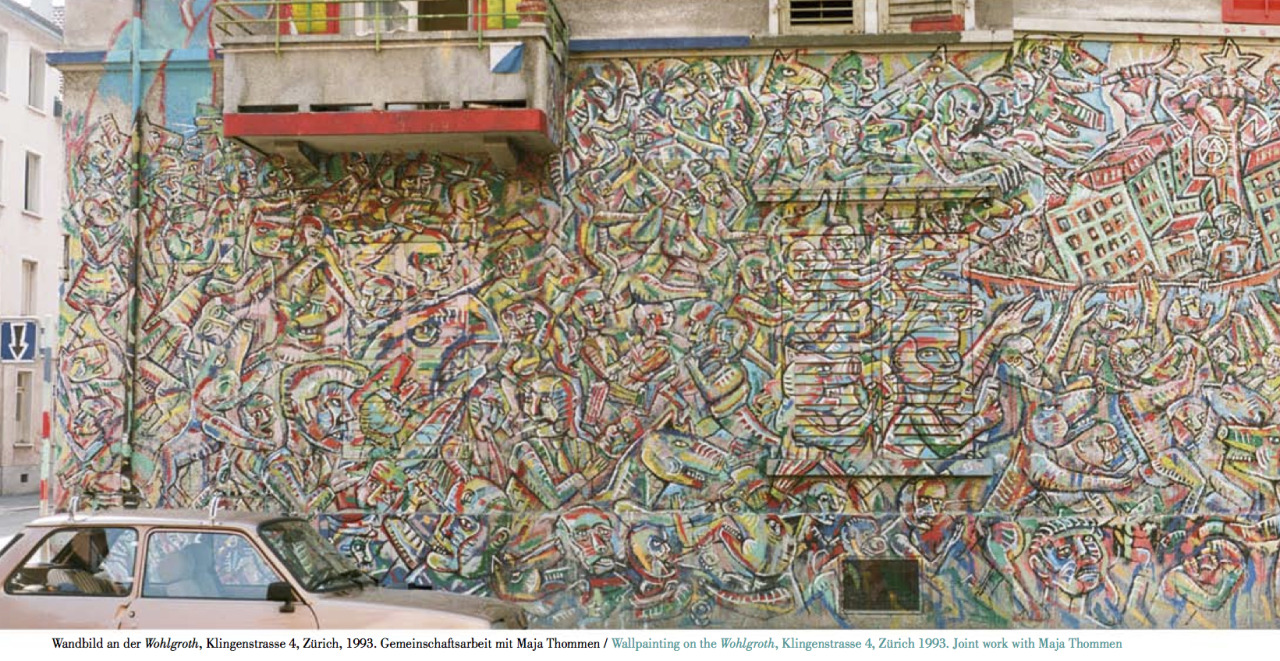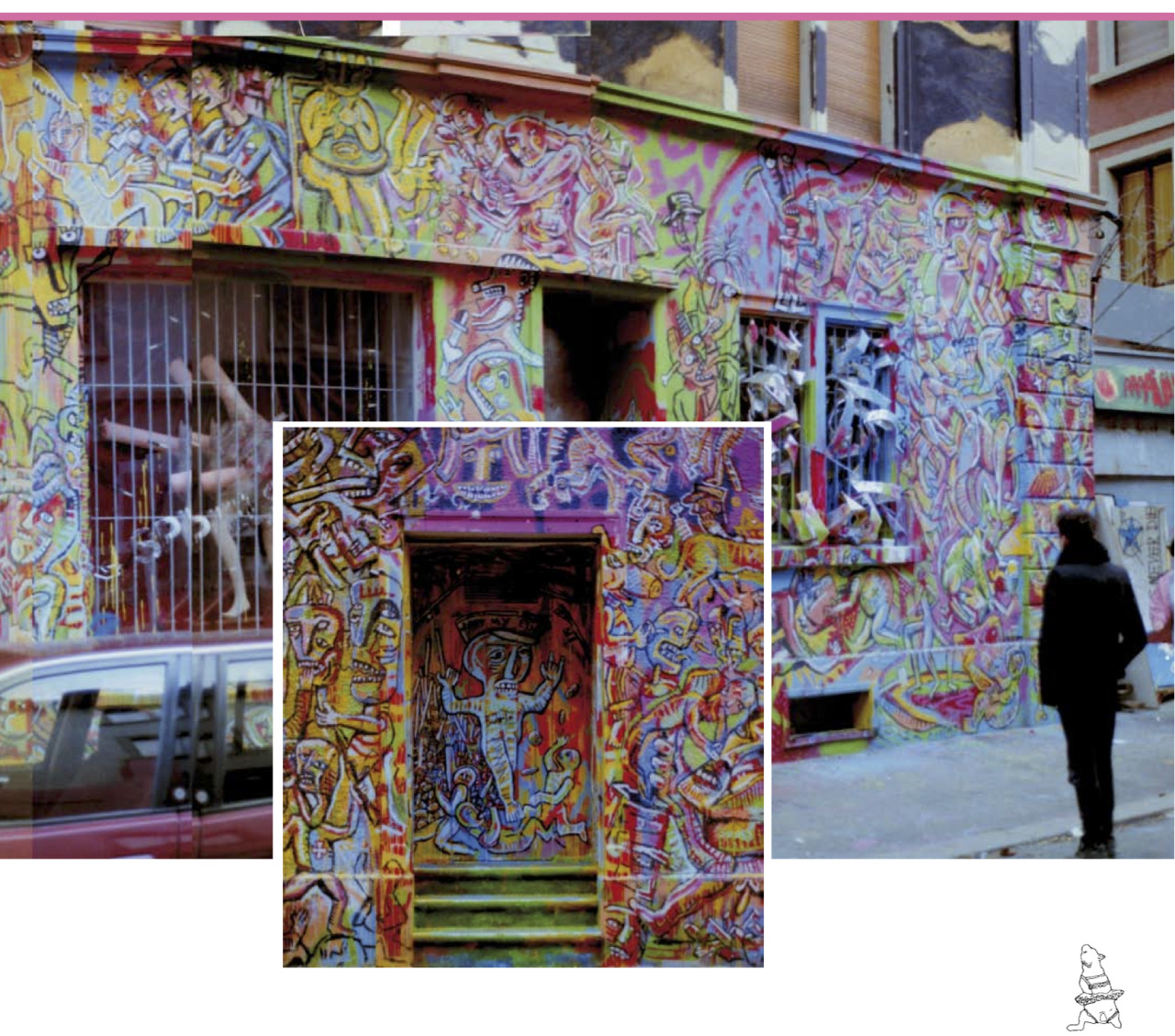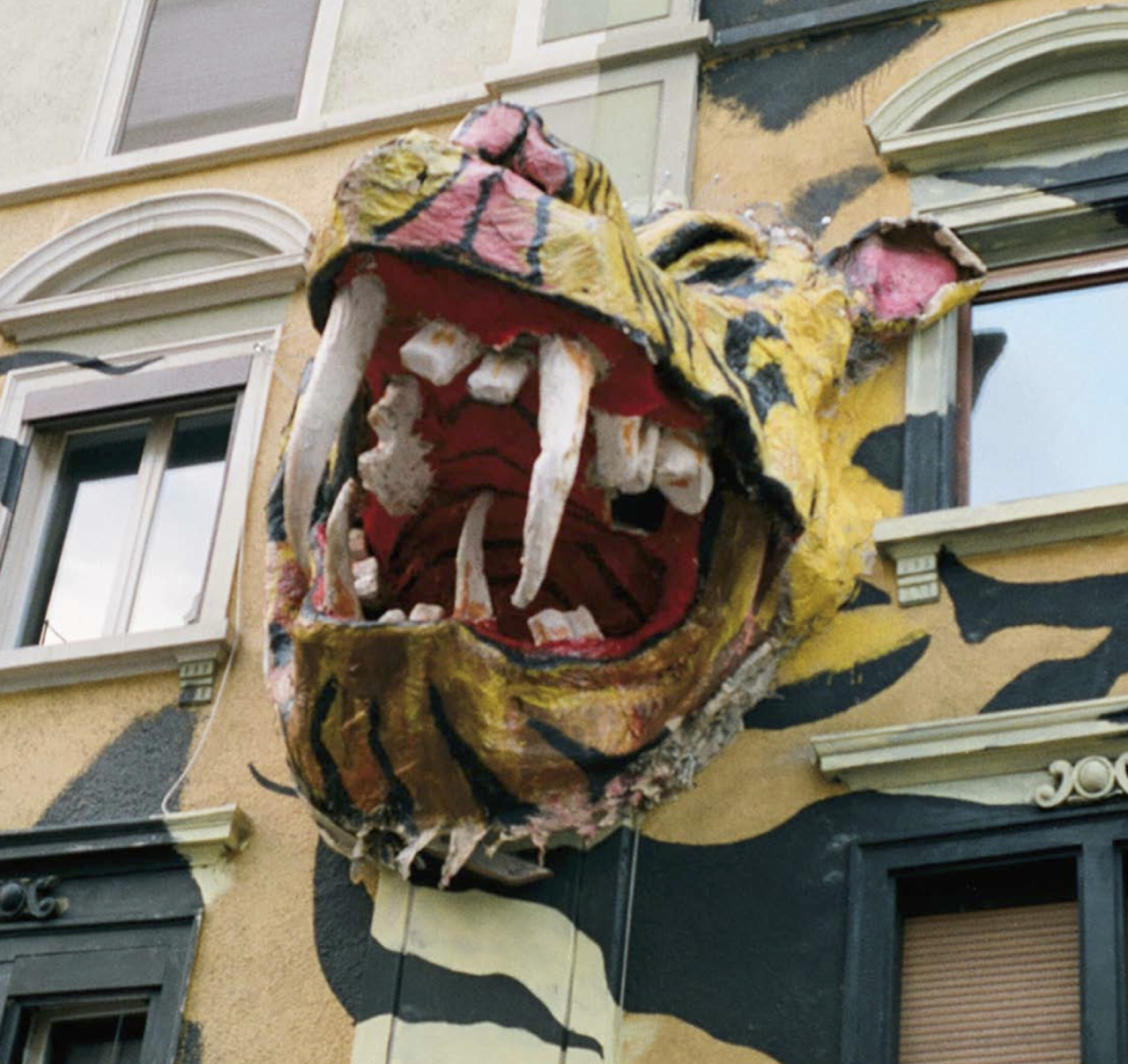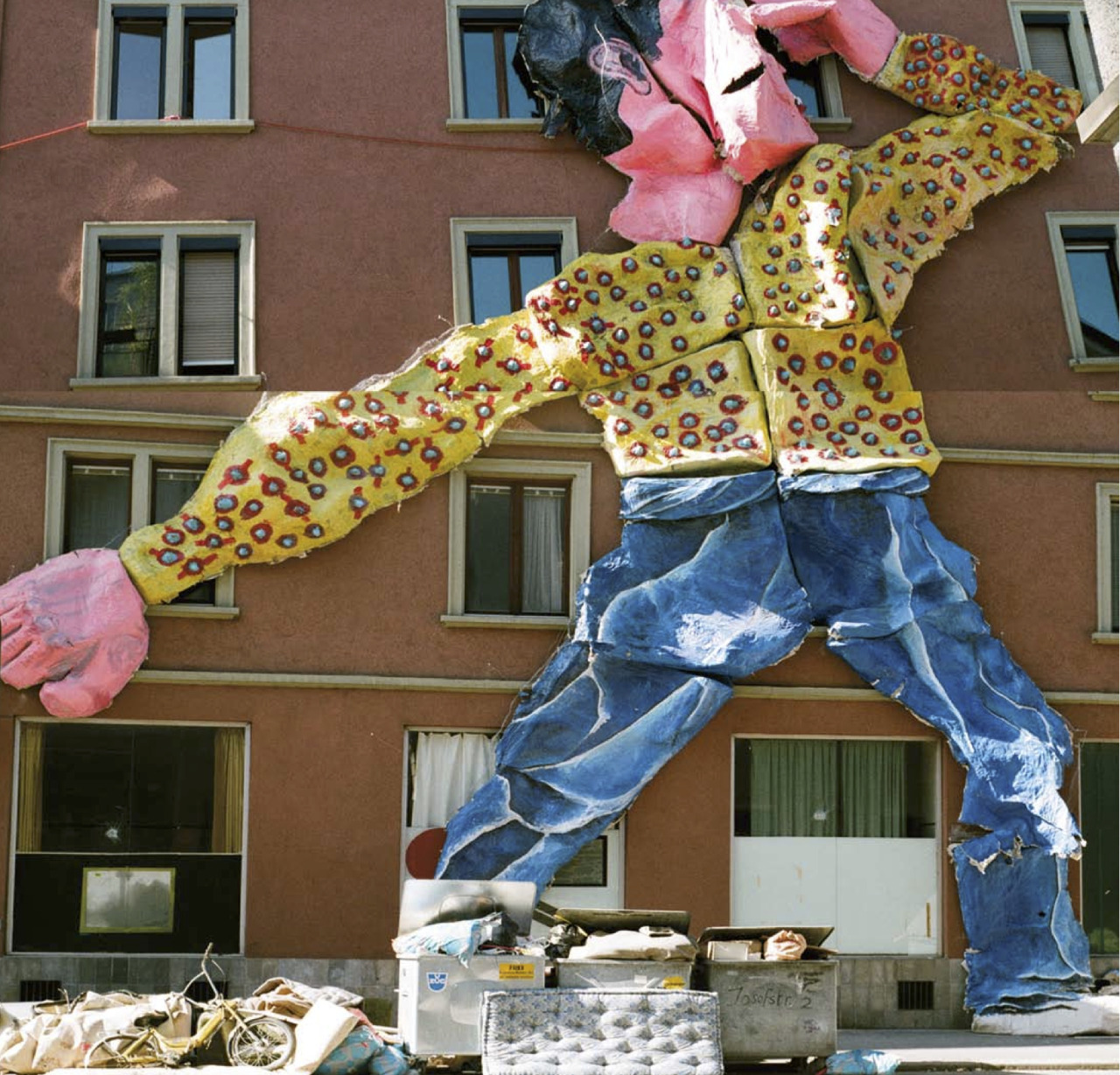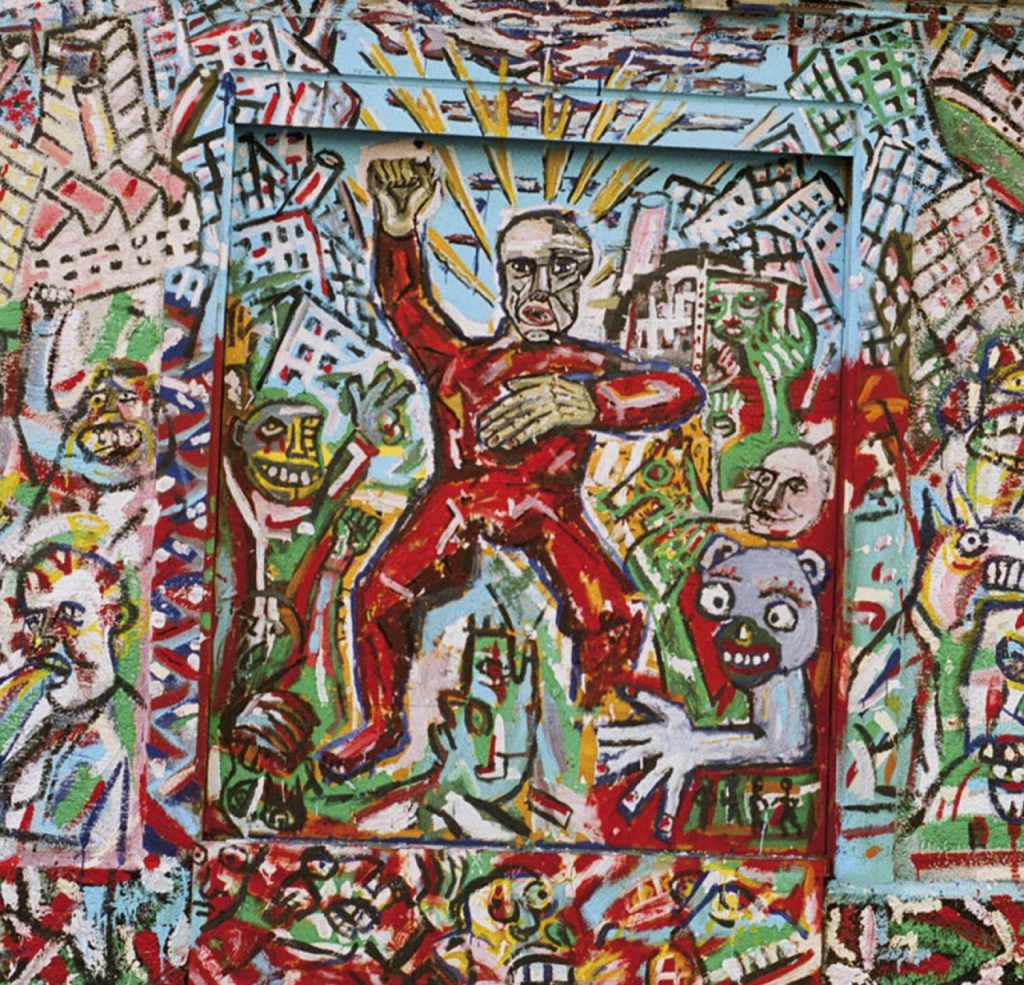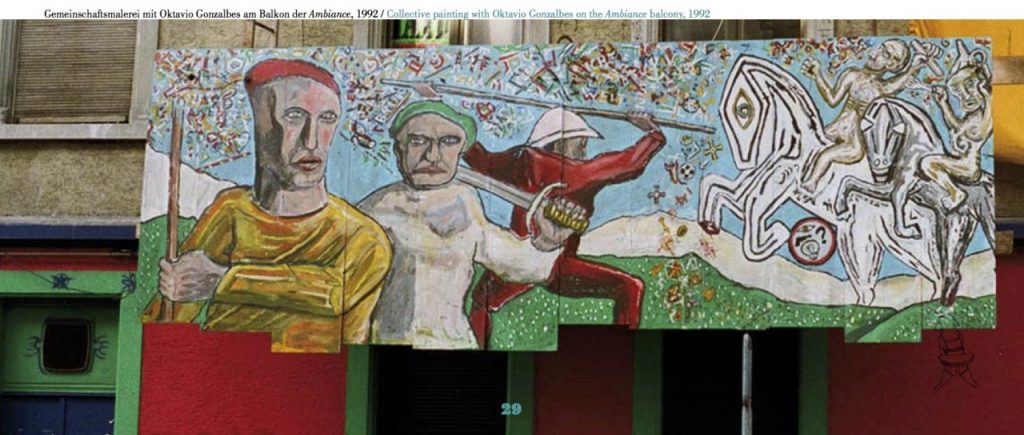Murals at Wohlgroth, zurich 1992-1993
For years Zurich had boasted an active squatting scene. There I had quite a few contacts. In the spring of ‘91 a group of activists occupied the site of the Wohlgroth gas meter factory in the 5th district. The area covered an entire street block and consisted of three tenements and a factory building. Unlike Berlin squats, the Wohlgroth buildings were not derelict. Electricity and water connections were all in perfect condition, and the central heating tank was full of oil. When I arrived at Wohlgroth in the winter of ‘92 the area had already been occupied for a year and a half and had been excellently taken care of. There was a cinema, a library, a flea market, a concert hall and a café, where meals for all 60 residents were prepared nightly. As everyone lived together, all organizational matters could be discussed at the breakfast table. This cultural institution functioned perfectly without any supervisory bodies or plenary meetings. Self-responsibility replaced obeying instructions from a higher authority. This simple principle of self-government was illustrated by the slogan “You puke, you wipe!” emblazoned in giant letters across the toilet wall.
Residents of Wohlgroth were much more cultivated than Berlin squatters. Most of them were very young, and many attended the nearby Zurich art schools. Alongside the nice kids, all of whom seemed to have known each other since primary school, the factory was a den for victims of the affluent society of all colors. Hordes of multiple drug users, wanted murderers and other sinister characters languished in the yard. Obviously, this colorful and inexperienced bunch was useless from a political point of view, and in the initial phase of the project social romantics and communists endeavored to enthuse Wohlgroth residents with their respective ideological agendas. The Zurich youth riots had taken place just ten years prior, and the struggle for autonomous Youth Centers (AJZ), to the tune of anarchistic political slogans, resulted in the institutionalized Rote Fabrik (Red Factory). So instead of preaching to the society at large on how to live life, we did our best to realize our own vision of collective life in the here and now as much as possible.
I wondered why the Zurich press consistently published negative reports about this functioning sociocultural utopia, and found that our PR activities were limited to leftist navel-gazing. A media group tasked with issuing press releases did exist, but the general view seemed to be that no one needed to be informed apart from the alternative Lora radio station and the left-wing weekly magazine WOZ. This was aggravated by the fact that, although Wohlgroth was internally well-organized, on the outside we did not appear overly enticing. In Tacheles and in the Dunckerstrasse I’d experienced how a project may be boosted by a good public appearance. The negative outward appearance had to be changed immediately. I began decorating the exterior facades with large-scale three-dimensional murals and installations. The plan worked out. Instantly the wildly adorned Wohlgroth became a popular photo motif, and after a while even renowned art critics began showing interest in the colorful building. At the same time I became involved with the media group and, after we approached the mainstream media, positive coverage of our project appeared there as well.
I established friendly ties not only with journalists but also with aspiring artists, some of whom I continue to collaborate with and have enjoyed enduring friendship. A vernissage for the completion of the first large mural on the facade of the occupied Wohlgroth factory began early. We had been lounging around in the Klingenstrasse since early afternoon, and motorists were obliged to make a wide circle in order to pass us. By the time it was dark I was fully drunk, when a 15-year-old graphic design student with a mischievous grin came up and showed me his homemade book of comics. Leafing through the pages I immediately thought: “This boy is a sly old dog.” I asked, “Do you want to do the next mural with me?” That is how in the summer of ‘93 I met my future friend Ingo Giezendanner, alias GRRR.
The mural with a chequered pattern of syringes and Zurich’s coat of arms was finished by summer break. Next we stuck rows of teeth onto a house in Josefstrasse and slapped a giant tiger head on the wall of the adjacent building. A few months later the Wohlgroth experiment found its abrupt end owing to the intervention of state authorities.
Murals At Ambiance 1992
Initially we intended to relax in Switzerland for a few weeks. In order to kill time during the long winter evenings, we painted a mural in the kitchen of a squat in Konradstrasse. This was met with broad approval, and we resolved to stay a bit longer. The Zurich graphic designer and illustrator Michel Casa Ramona invited us to paint the facade of the Ambiance, another squat in Konradstrasse. At that time I was influenced by Hodler motifs and therefore used nothing but brushes and expired acrylic paints from the Opera House, in order to express my protest against the omnipresent spray can street art.

